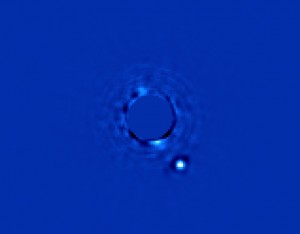CES Week 2014
What do comfortable shoes, lip balm, and battery packs have in common? With CES news dominating the airwaves this week, there’s been a little less science news coming across my desk, so this week’s rundown is a little shorter than usual. But here’s something additional to the CES Rundown Rundown I did yesterday: Gizmodo getting meta. They’ve got a whole post describing the gear at the show — the gear they took with them. Check it out: “The Gear That Got Us Through CES.”
What’s Cooler Than Cool? (Ice Cold)
The other major news this week has, of course, been the terrifyingly named “Polar Vortex” keeping things cool in North America, and making the earth “boom” from Cryoseisms (Ice-Quakes) in Canada. But just what is this polar vortex, and what does it mean for global warming? The tinfoil-hat climate-change deniers came out in full force this week, led by consummate idiot and comb-over aficionado Donald Trump, claiming that global warming is now easily dismissed because winter is still cold occasionally. Thankfully over at Scientific American, Mark Fischetti has an explanation of what the vortex is, and how global warming might actually be the cause of its southward wandering. Plus over at Weather Underground, Dr. Jeff Masters has a great post explaining that the only thing that’s really odd about this weather is that we don’t get it as often as we used to.
Meanwhile in other news of the cold, the journal Nature is reporting that a group of scientists at the Ludwig Maximilian University have managed to cool a collection of potassium atoms to a few billionths of a degree Kelvin below absolute zero. The article was published on January 4 in the journal Science.
And a helpful infographic from Tablet has been making the rounds: How To Walk On Ice (or, as I call it, How To Walk Like A Canadian)
A Long Way Away
This week also saw the publishing of the first ever image of an extra-solar planet, produced by the Gemini Planet Imager. The planet’s name is Beta Pictoris b, and it’s 63.4 light-years away. It’s about ten million years old, and “several times larger than Jupiter,” which means it’s both big enough and warm enough to be seen clearly by Gemini’s near-infrared camera. It’s the first time we’ve ever actually seen a planet orbiting another star, as the methods for detecting them are typically either by watching whether the star dims as a planet passes in front of it, or watching the star wobble as the planet orbits around it.
Building a Better Battery
The biggest problem with solar and wind power is that they’re intermittent. That is, when the sun doesn’t shine and the wind doesn’t blow, what do you do if you still need the lights to come on? While one solution we’ve talked about on this site is the giant molten salt batteries in use in Arizona, this week a team at Harvard has demonstrated another alternative in the form of a flow battery. But where flow batteries have traditionally been made with relatively expensive materials like vanadium, this new model uses organic molecules called quinones, which are relatively abundant in everything from crude oil to green plants. The one used in this battery is apparently very similar to one found in rhubarb. Nature has the full story.
Sucking the Colorado Dry
When Lake Mead is full, it’s the largest reservoir in the United States, but things aren’t looking good for the Colorado River, the reservoir’s source. Over the past decades it’s been getting drier and drier in the region, with booming agriculture and a fast-growing population only making the situation worse. Over at the New York Times, Michael Wines has the story of the dwindling river and the problems it could cause for the region.
Spaceship News
Making the rounds this week has been this video, from Business Insider’s Ignition conference last November, in which Elon Musk explains that he didn’t really mean to get into the rocketry business to start with — his goal was to get NASA more funding.
It’s been a good week for Musk: on Monday SpaceX launched the communication satellite Thaicom 6, its second GTO (geostationary transfer orbit) launch, and on Friday it won the contract to launch the Japanese Sky Perfect JSAT Corporation’s JCSAT-14 satellite in 2015.
In other news it’s also been a good week for Sir Richard Branson’s Virgin Galactic as its SpaceShipTwo reached record heights and speeds during it’s third rocket test. Gizmodo’s Sploid blog has the gorgeous photoset.
Google+Mail
This week Google introduced a new service whereby Gmail users will be able to be contacted by people who don’t know their e-mail addresses. I’ve been trying to put my finger on what specifically bothers me about Google’s attempts to foist Google+ onto an unwilling populace of Gmail users, but it wasn’t until I read this piece by Selena Larson that I saw it perfectly articulated. It’s worth the read: “Google+ is Getting Harder and Harder to Avoid.”
Have a great week.

